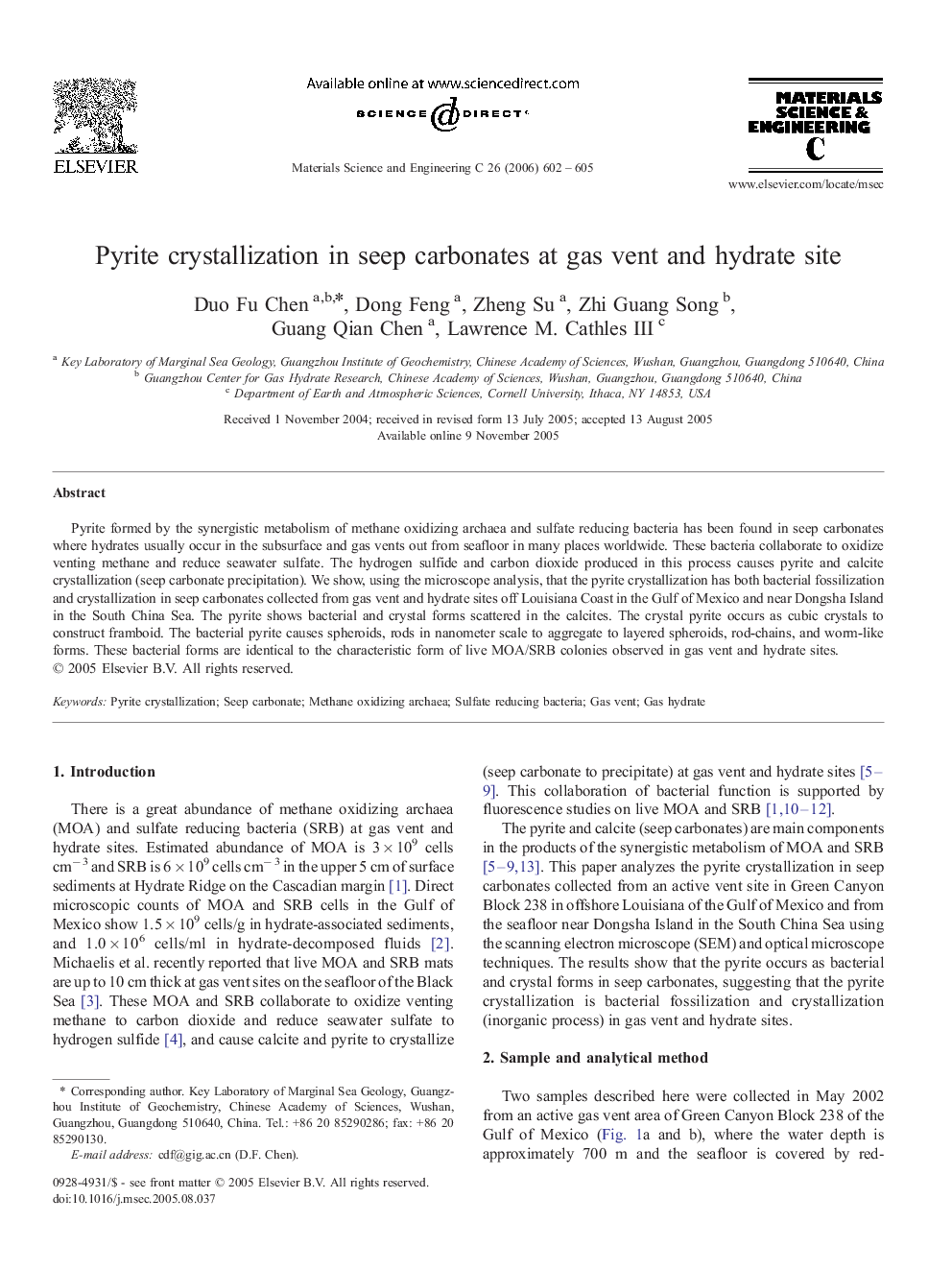| Article ID | Journal | Published Year | Pages | File Type |
|---|---|---|---|---|
| 1431014 | Materials Science and Engineering: C | 2006 | 4 Pages |
Pyrite formed by the synergistic metabolism of methane oxidizing archaea and sulfate reducing bacteria has been found in seep carbonates where hydrates usually occur in the subsurface and gas vents out from seafloor in many places worldwide. These bacteria collaborate to oxidize venting methane and reduce seawater sulfate. The hydrogen sulfide and carbon dioxide produced in this process causes pyrite and calcite crystallization (seep carbonate precipitation). We show, using the microscope analysis, that the pyrite crystallization has both bacterial fossilization and crystallization in seep carbonates collected from gas vent and hydrate sites off Louisiana Coast in the Gulf of Mexico and near Dongsha Island in the South China Sea. The pyrite shows bacterial and crystal forms scattered in the calcites. The crystal pyrite occurs as cubic crystals to construct framboid. The bacterial pyrite causes spheroids, rods in nanometer scale to aggregate to layered spheroids, rod-chains, and worm-like forms. These bacterial forms are identical to the characteristic form of live MOA/SRB colonies observed in gas vent and hydrate sites.
